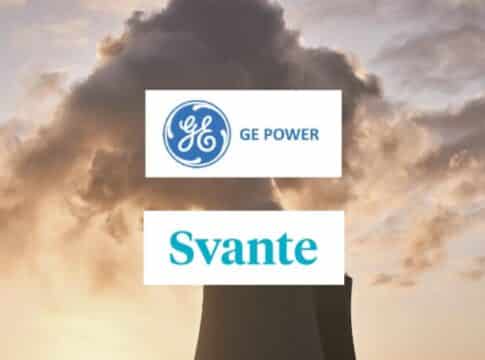GE and Svante Join Hands to Develop Carbon Capture Tech
GE Gas Power and Svante agreed to develop a carbon capture technology for natural gas power generation applications.
Apart from the joint development agreement, GE had also invested in Svante as part of the latter’s fundraising round in December last year. Chevron led the round, capping the biggest carbon capture fundraising deal in the region.
The Carbon Capture Deal
The partnership between GE and Svante will focus on further development and commercialization of one specific kind of carbon capture technology – solid sorbent. This tech can capture carbon right at the source of the emission, also known as point-source carbon capture. It is also applicable in sucking in carbon directly from the air, otherwise called the direct air capture (DAC) system.
Scott Strazik, CEO of GE Vernova, commented on the deal saying that working with a tech innovator like Svante will advance the development of carbon capture solutions for the energy industry, and “deliver more sustainable, affordable, and reliable electricity for more people”.
Claude Letourneau, President and CEO of Svante said that their carbon capture tech will decarbonize gas-fired turbines cost-effectively. Letourneau added that they have the potential to:
“…open up an entirely new array of opportunities, aiming to provide carbon-free electricity in the future through the deployment of projects across gas-fired power generation facilities.”
GE’s expertise in energy applications is important for Svante as the company scales up to capture millions of tonnes of carbon from various industrial sites worldwide.
Just last month, the U.S. Department of Energy rolled out $2.52 billion to fund carbon capture initiatives that seek to boost investment in technologies that capture, transport and store carbon.
Svante’s Carbon Capture Tech
Svante offers a novel approach to carbon capture. It is using unique solid sorbents to coat its CO2 capture filters.
In particular, Svante uses metal-organic frameworks (MOFs) which capture carbon from diluted flue gas streams with high capacity and selectivity. These filters can capture 95% of the total carbon emitted from industrial sources. They adsorbed CO2 using direct low-pressure steam injection for regeneration.
Source: Svante website
The MOFs are thin sheet laminates, stacked together, and made to form Svante’s nano-engineered CO2 capture filters. They have a high porosity and resistance to degradation.
The carbon capture filters have multiple applications for capturing carbon. Heavy industries such as cement, steel, refineries, boilers, aluminum, and more will find the tech useful in abating their emissions.
How Svante’s Point-Source Carbon Capture Works
Source: Svante
Svante’s modular carbon capture machines can be delivered to industrial sites without requiring any hazardous material or chemical plants. The machines work in three steps.
Step One:
The filters are placed inside the rotary adsorption machine or “RAM”. The RAM then captures diluted CO2 from industrial flue gas using Svante’s patented temperature swing adsorption process, VeloxoThermTM.
Step Two:
As the MOF filters rotate inside the machine, they adsorb diluted CO2 and turn it into pipeline-grade CO2.
Step Three:
The compressed CO2 product can be moved into a pipeline where it can safely be transported and injected deep underground. Or it can also be recycled and used to make new products as what other companies do.
GE Vernova Spin Off and DAC
Supporting Svante’s technology is one of the many efforts GE makes to scale up carbon capture and drive energy transition.
GE believes that the climate crisis calls for investments that can bring significant emissions reductions such as CO2 capture technologies. Driven by that belief, the energy giant decided to make GE Vernova a separate business entity by 2024.
The spin off company will focus on speeding up the transition to renewable energy sources and cutting carbon emissions. To date, GE provides about 30% of the world’s electricity.
One more unit of GE, the Climate Action@GE or CAGE Lab, also revealed that they’re currently working on another technology that can reduce emissions – direct air capture (DAC).
This DAC system uses a unique technical approach, bringing together GE’s competencies in heat exchangers, thermal management, and innovative materials. It works similar to the Defense Advanced Research Projects Agency (DARPA) in capturing clean, potable water from extremely arid, desert-like air.
GE was able to show that its DAC system is effective in removing carbon while hoping that it has the potential for commercialization by next year.
The post GE and Svante Join Hands to Develop Carbon Capture Tech appeared first on Carbon Credits.



